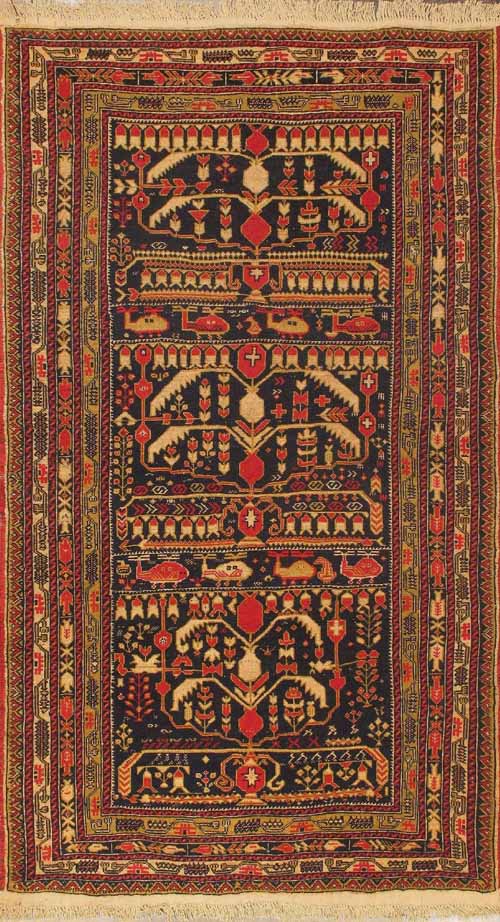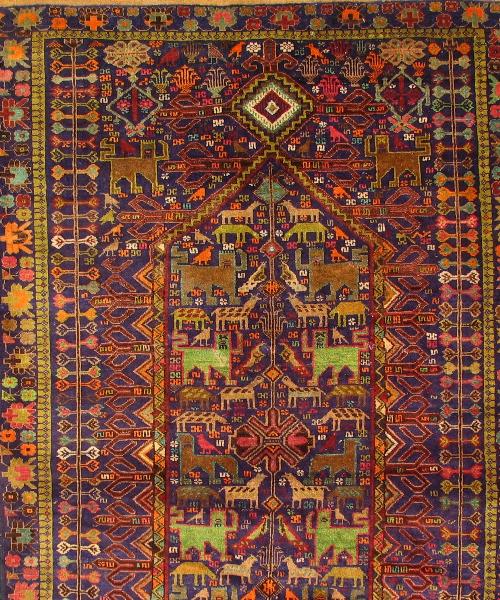Hello Filiberto,
Your war rug is very similar to two war rugs in my collection. When I
bought them they were identified as Mouri rugs from Afghanistan. They
are both very finely woven, all wool, and with a floppy handle. The
borders are certainly related to your rug, as are the compartments
enclosing the design elements.
There isn't much online or elsewhere about Mouri or Mori rugs. One
online source, carpetencyclopedia.c om, says " The Pakistani carpets,
which today are mass-produced (in Lahore, Karachi and Rawalpind), are
divided into Mori carpets and Persian where 90% of the Mori carpets
have a Bokhara-like
pattern and other Turkmenistan patterns."
Vincent's opinion about your rug being made in Pakistan may be correct.
However...
Another source, which is commercial so I won't name it, says "These
elegant Afghan rugs are hand knotted in Mouri Velayat in North West of
Afghanistan.
Few people will know them by name. The highly creative and meticulously
woven designs are achieved by using the finest wools, natural dyes and
in many cases silk highlights. Whereas normal afghan weaving is coarser
and limited to reds and blacks, these stunning works have a plethora of
designs and colors. Mouri rugs are the highest quality rugs woven in
Afghanistan."
I was not able to find any information on Mouri Velayat so that remains
a mystery to me.
Here are my rugs:




The first rug has more obvious and contemporary war elements,
helicopters and what I think are rows of bombs. The second rug's
imagery is older, like yours, with a lion or tiger (or maybe a leopard)
attacking a deer. I'm not sure which story it's related to but I'm sure
someone out there wll know.
I don't think that the Mouri rugs are any older than 10 years.
I also have a couple of c.1980's Afghan Balouch war rugs that have
lions, with and without swords, a classic representation of aggression
in some Soviet-era war rugs:




I love the plethora of small birds and other motifs in these Balouchs.
I hope this has been helpful in regard to your rug.
Best,
Rachel